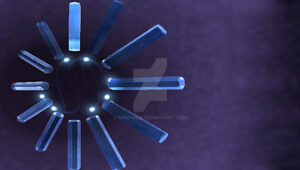What is PS2 BIOS?
The PS2 BIOS, or PlayStation 2 Basic Input/Output System, serves as a crucial component of the PlayStation 2 console. It functions as the firmware responsible for initializing and managing the hardware when the system is powered on. Its primary role is to ensure that all internal and peripheral devices are properly configured, enabling the console to operate seamlessly. Without the PS2 BIOS, the PlayStation 2 would be unable to load games or engage with various features, rendering it inoperative.
The PS2 BIOS incorporates several technical elements that contribute to its functionality. These include system configuration settings, hardware control instructions, and essential routines that handle the input and output operations of the console. As the system boots up, the BIOS engages with various subsystems, checks their status, and prepares them for interaction, ensuring that everything is in place for a smooth gaming experience. Thus, any disruption in the BIOS can lead to malfunctions, affecting not only gameplay but also the overall user experience.
In terms of emulation, the PS2 BIOS is critical. Emulator software, which allows users to play PS2 games on different platforms, relies on obtaining the PS2 BIOS file to replicate the behavior of the original hardware. This BIOS file contains the necessary information that the emulator uses to mimic the original console’s operations. Without the correct PS2 BIOS, the emulation process may encounter compatibility issues, leading to performance deterioration or failure to run the games entirely. As such, understanding the role and functionality of the PS2 BIOS is fundamental for both the maintenance of the PlayStation 2 console and the success of emulation efforts.
How to Obtain PS2 BIOS
Obtaining PS2 BIOS files is an essential step for anyone interested in emulating PlayStation 2 games on their computer. It is vital to approach this process with a clear understanding of the legal implications surrounding BIOS files. The most recommended method for acquiring PS2 BIOS is to extract it directly from your own PlayStation 2 console. This approach not only ensures that you are following legal guidelines but also guarantees that the BIOS files you obtain are authentic and compatible with your games.
To extract the BIOS from your PS2, you will need specific tools and software. Programs like ‘PS2 BIOS Dumper’ can facilitate this process, enabling you to create a backup of the necessary files. When using such tools, it is crucial to adhere to the instructions carefully to avoid damaging your console or corrupting the BIOS data. Ensure that your PlayStation 2 is functioning correctly, and prepare any necessary cables for connecting it to your computer.
While some may consider downloading pre-extracted PS2 BIOS files from the internet, this practice is fraught with legal and ethical issues. Such files may not only violate copyright laws but can also pose risks to your system, including malware or corrupted data. Therefore, it is always advisable to rely on your own hardware for BIOS extraction. Additionally, it is essential to keep your BIOS files organized and secure, as they are integral to your emulation setup.
Emulators like PCSX2 require the BIOS files to function, and having proper management tools can enhance your experience. Familiarizing yourself with file management software will allow you to handle your BIOS files seamlessly. In summary, legally obtaining PS2 BIOS from your device is not just a safe choice but also a responsible one, ensuring compliance with legal standards while providing you with the best emulation experience possible.
Setting Up PS2 BIOS for Emulation
To successfully emulate PlayStation 2 games, the configuration of the PS2 BIOS within your emulator is essential. The PS2 BIOS acts as the system’s core firmware, allowing the emulator to function correctly. One of the most popular emulators that utilizes PS2 BIOS is PCSX2, which is available for Windows, Linux, and macOS. This guide will walk you through the process of setting up the PS2 BIOS within this renowned emulator.

Firstly, it is imperative to obtain the correct BIOS files. These files are typically extracted from a physical PlayStation 2 console, as downloading them from the internet may violate copyright laws. Once you have secured the necessary BIOS files, the first step is to launch the PCSX2 emulator. On the main screen, head to the ‘Config’ menu, then proceed to ‘Configure’ which opens up the settings window.
Within this configuration window, locate the ‘BIOS’ tab. Here, you will find an option to browse for your BIOS files. Click on ‘Browse’ to locate the directory on your computer where the BIOS files are stored. Select the appropriate files, ensuring they are named correctly, typically as ‘SCPH-xxxxx.bin’ where ‘xxxxx’ denotes the specific version of the BIOS. Once these files are selected, save your settings and return to the main emulator interface.
If, after installation, PCSX2 does not recognize your BIOS files, it could be due to incorrect file naming or placement in the wrong directory. Ensure that the files are located within the ‘bios’ folder of PCSX2’s installation directory. It’s also advisable to check for updates to the emulator as each version may improve BIOS compatibility. Troubleshooting any errors related to BIOS configuration often involves confirming that your files correspond to the regional version of the games you intend to play, which can greatly enhance performance and compatibility.
By following the steps outlined above meticulously, you will effectively set up the PS2 BIOS in PCSX2, allowing for a seamless emulation experience. Familiarity with these processes not only aids in better gameplay but also enhances your understanding of the nuances involved in the configuration of PlayStation 2 emulation.
The Importance of PS2 BIOS for Game Compatibility
The PlayStation 2 BIOS is a pivotal component for anyone looking to emulate PS2 games effectively. It serves as the firmware that enables the emulator to communicate with the PlayStation 2’s architecture, handling tasks that are fundamental for game operation. Different versions of PS2 BIOS can significantly impact game compatibility and performance, leading to distinct gaming experiences for users. This difference is particularly notable when comparing various BIOS versions available for emulators.
When utilizing an emulator, the specific version of the PS2 BIOS being used can influence how well certain titles perform. Some BIOS versions may be more adept at handling particular games, resulting in smoother gameplay and fewer glitches. For example, while most users may default to a standard BIOS set, those who seek improved compatibility might discover that specific versions or even region-specific BIOS files can enhance their gaming experience considerably. Updated BIOS versions often come with fixes that address previously encountered issues, ensuring that players have access to an optimized experience.
Moreover, changing a PS2 BIOS version can affect how well games load and run. Players may encounter performance problems such as lag or graphical glitches, which can be traced back to the BIOS version in use. By updating to a newer version or switching to one known for better compatibility with certain titles, users have been able to mitigate these issues effectively. Thus, taking the time to research and select the appropriate PS2 BIOS can transform the emulation experience, making it essential for gamers who wish to enjoy classic PS2 titles without compromise. Paying attention to BIOS updates can also ensure that players are leveraging the latest improvements available to the emulator community.
